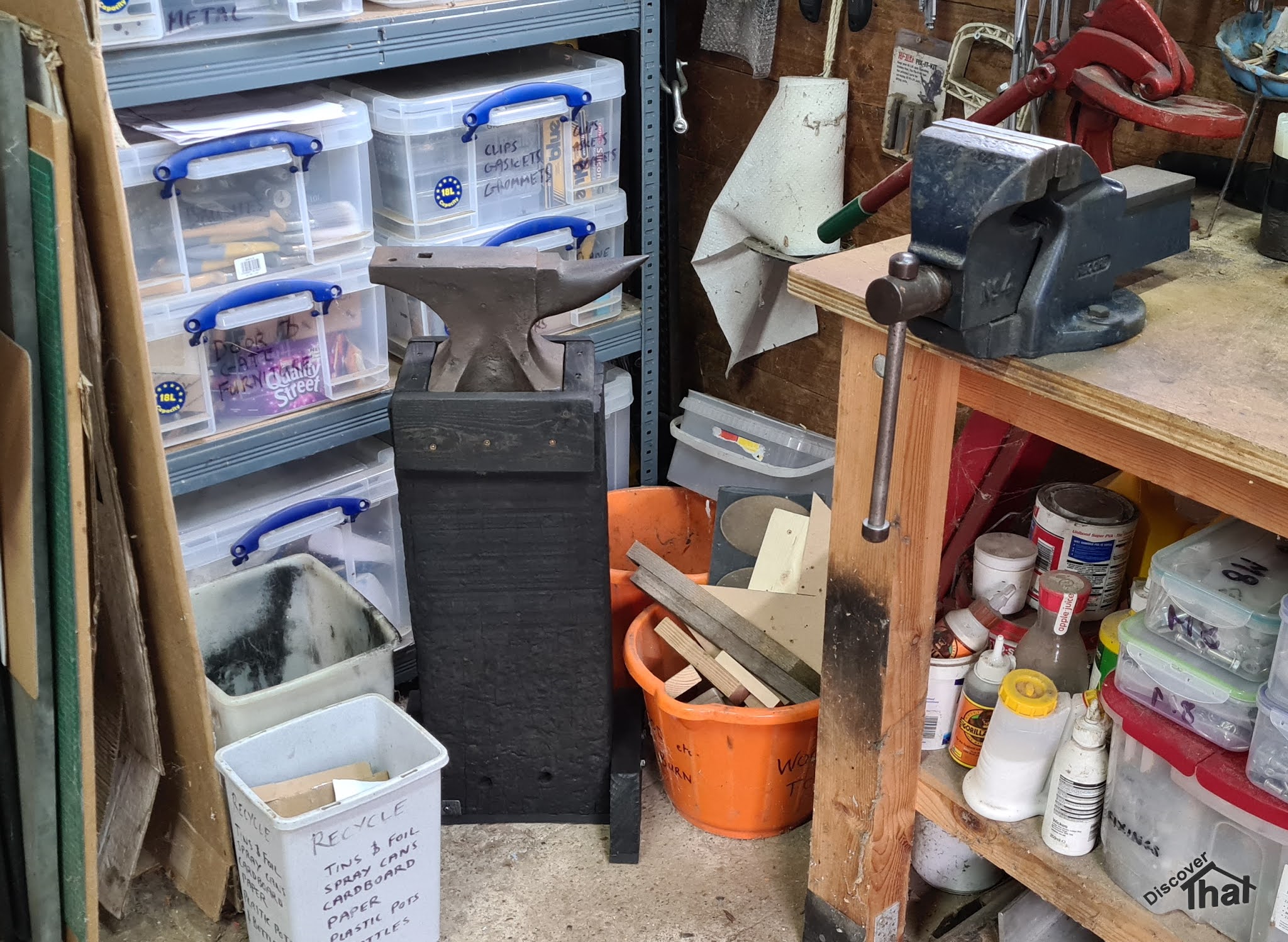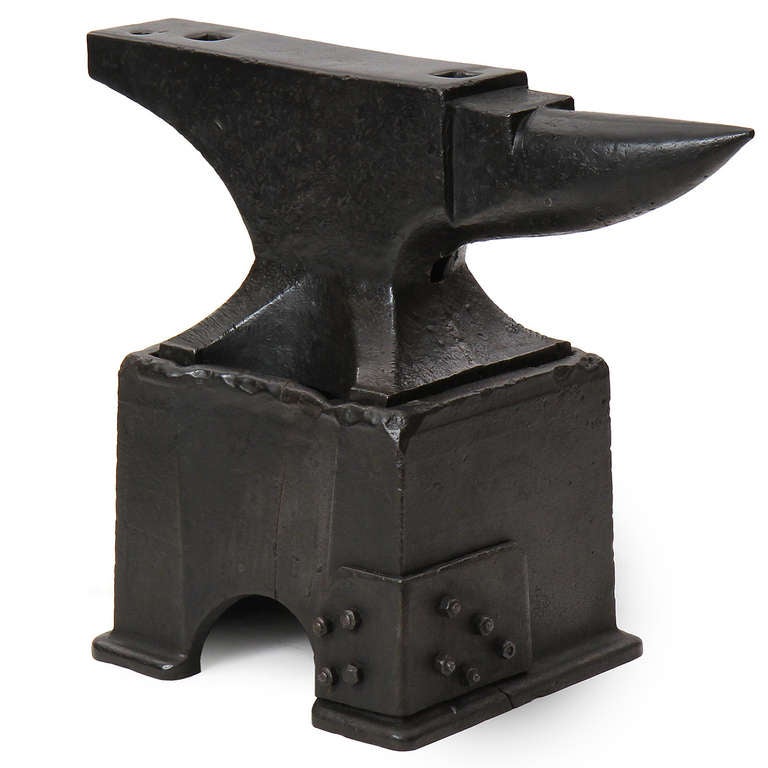

Saw maker anvils, for instance, are generally a large rectangular block of steel that have a harder surface than most other anvils due to hammering on a harder steel for saws.

Most of these anvil types look similar, but some are radically different.

For example, there were anvils specifically made for farriers, general smiths, cutlers, chain makers, armorers, saw tuners, coach makers, coopers, and many other types of metal workers. There are many designs for anvils, which are often tailored for a specific purpose or to meet the needs of a particular smith. In recent times, tripod bases of fabricated steel have become popular.
#ANVIL STAND FOR MINI ANVIL FULL#
In addition, bases have been made from dimensional lumber bolted together to form a large block or steel drums full of oil-saturated sand to provide a damping effect. In more modern times, anvils have been placed upon bases fabricated from steel, often a short thick section of a large I-beam. When concrete became widely available, there was a trend to make steel reinforced anvil bases by some smiths, though this practice has largely been abandoned. These bases are highly sought after by collectors today. They had the advantage of adding additional weight to the anvil, making it more stable. In the industrial era, cast iron bases became available. The most common base traditionally was a hard wood log or large timber buried several feet into the floor of the forge shop. Common methods of attaching an anvil are spikes, chains, steel or iron straps, clips, bolts where there are holes provided, and cables. The anvil is placed as near to the forge as is convenient, generally no more than one step from the forge to prevent heat loss in the work piece.Īn anvil needs to be placed upon a sturdy base made from an impact and fire resistant material. It is soft and is used for cutting its purpose is to prevent damaging the steel face of the anvil by conducting such operations there and so as not to damage the cutting edge of the chisel, though many smiths shun this practice as it will damage the anvil over time. The step is the area of the anvil between the "horn" and the "face". Also, some anvils are made with side horns or clips for specialized work. Some anvils, mainly European, are made with two horns, one square and one round. It also is used by some smiths as an aid in "drawing down" stock (making it longer and thinner).

The horn is used mostly in bending operations. The horn of the anvil is a conical projection used to form various round shapes and is generally unhardened steel or iron. Hammers, tools, and work pieces of hardened steel should never directly strike the anvil face with full force, as they may damage it this can result in chipping or deforming of the anvil face. A hard anvil face also reduces the amount of force lost in each hammer blow. The face is hardened and tempered to resist the blows of the smith's hammer, so the anvil face does not deform under repeated use. Also, sharp edges tend to cut into the metal being worked and may cause cracks to form in the workpiece. Any marks on the face will be transferred to the work. It is generally made of hardened steel and should be flat and smooth with rounded edges for most work. Our deep interest & love to take challenges to develop new tools exactly as per customers sample has built a firm confidence in our customers on us as we are 100% successful in our development program.The primary work surface of the anvil is known as the face. As a part of our constant endeavor to offer our customers enhanced services and better tool value, we keep ourselves updating with new developments and competitive prices with a strict policy of no compromise in quality.Backed with valuable support & belief of our worldwide long-term customers, we encouraged ourselves to diversify our product range to support our much valued customers for one stop shop for all tooling needs. Building relationship with our quality & Dedicated services is always on the top of our Company's agenda and this has established ourselves as an leading manufacturers & Exporters of Industrial & precision Tools since 1979.Our Group of engineers with decades of expertise in Tool designing & quality Maintenance has led to a massive growth of our company around the Globe.In Pursuit of excellence & perfection we give our tools high accuracy, economy & longer life by ensuring proper heat treatment and inspection with sophisticated instruments under the staff of dedicated & Experienced Engineers so as to ensure reliable performance under most demanding conditions.


 0 kommentar(er)
0 kommentar(er)
